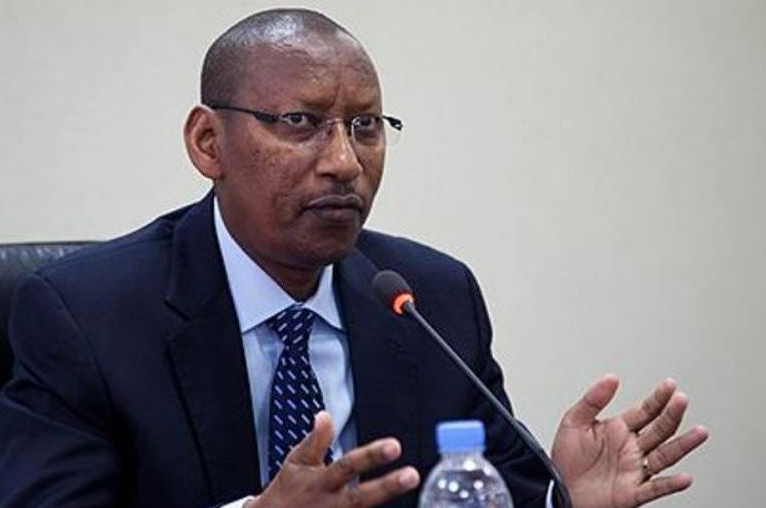
John Rwangombwa, Governor of the Central Bank
The continued drop in value of local currency against the US dollar may not have a significant effect on Rwandan economy -the central Bank has said.
Despite volatility in the foreign exchange market which has recorded a 7.5% depreciation in the first half of 2016, Rwanda’s central bank promises the economy will continue to be resilient.
Forex volatility has been attributed to an increase of 3.3% growth in import receipts compared to the contracting export value by 2.4% as demand for dollars from different companies and government projects continue to increase.
As a result, the country’s trade deficit continued to worsen increasing by 5.1 percent to 902.69 million from 858.98 million in the first half of 2016 further exerting pressure on the economy that grew by 7.3 percent in the first half of 2016.
But Central bank says depreciation on the other hand helps strengthen the country’s competitiveness as a market, dispelling fears of a 10-year high depreciation.
“This doesn’t mean negative alone, we are not an island and we are in the global market and competitiveness matters a lot,” said John Rwangombwa, Governor of the Central Bank on Thursday.
Rwangombwa speaking at the monetary policy and financial stability statement presentation in Kigali said the depreciation is not likely to translate into high inflation, “This depreciation does not transform into inflation and our main concern is inflation.”
According to the statement, inflation increased to 4.5 and 4.9 percent in the first and second quarters of 2016 up from 1.0 percent and 2.0 percent the same periods under review.
Transport inflation increased to 7.3 percent in quarter two from 4.6 in quarter one.
But the economy is also facing a slowdown in both net credit to government and in the stock of credit to the private sector which stood at 214.9 and 7.9 percent respectively between December 2015 and June 2016 down from 688.8 percent and 15.0 percent in 2015.
The bank indicates total exports dropped in value by 2.4 percent in the first half of 2016 to U$ 268.57 million from U$ 275.12 million after a decline of 6.3 percent in the same period of 2015.
While minerals, tea, coffee and other exports contributed negatively by 36.6 percent, 5.7 percent, 9.2 percent and 0.9 percent respectively, export volumes increased by 16.5 percent in the same period.
Imports on the other hand grew by 3.3% in value to U$1.171.25 million from U$1.134.10 million, a rise driven by capital goods that increased by 35.1%, consumer goods 3.2%, but energy and lubrications declined by 20.3% and intermediary goods 14.8%.
“The mismatch is mainly due to reliance on low value export products whose prices depend on the global market and the continued high demand of foreign produced goods,” the Governor said.
Lamin M. Manneh, UN Resident Coordinator, says that the government should put more efforts into boosting domestic resource mobilization as well as strengthening the industry sector as one way of offsetting the surging import receipts.
Despite this, the Bank says the economy is expected to grow by 6 percent as earlier projected after a 7.3% growth in the first half of 2016 mainly driven by growth in industry and services sectors by 10 percent and 7% respectively.
Accordingly, the industry sector gained by 8.4 percent in total turnovers in the first half of 2016 with the energy sector contributing highest 65.9%, manufacturing 14.4%.


